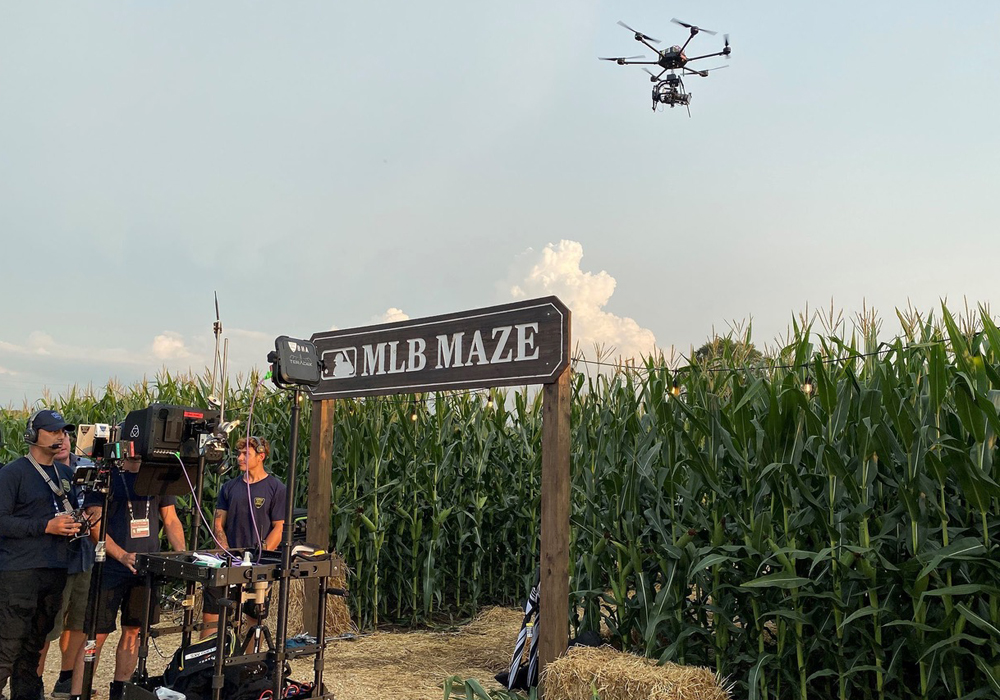
5G Production Gains Traction

5G cellular technology should be a hot topic at the IBC show in Amsterdam this weekend, with two different proof-of-concept 5G demonstrations under the “IBC Accelerator” program being presented on Saturday and a slew of 5G transmission systems being demonstrated on the show floor from Friday through Monday. And vendors say the 5G buzz is finally justified, as broadcasters are starting to use 5G regularly for live production applications — even if 5G’s benefits have yet to prove revolutionary for news and sports coverage.
Vendors agree that Europe and Asia are ahead of the U.S. in 5G deployment, with the U.S. rollouts delayed further by the COVID-19 pandemic. Much of the early 5G hype in the U.S. was over “high-band” millimeter-wave (mmWave) services that use very small wavelengths to deliver narrow beams across big chunks of bandwidth with download speeds of 1 to 2 gigabits per second (Gbps) and latencies in the milliseconds. The tradeoff is that mmWave transmissions generally can travel only several thousand feet and have a hard time penetrating buildings as well as other barriers like leaves, and thus require a very high density of transmitters to provide usable coverage.
Carriers like Verizon and AT&T have rolled out mmWave across parts of big cities as well as large public venues like sports stadiums. But the bulk of 5G service in the U.S. is still low-band, which has long wavelengths that provide similar coverage to LTE and 4G, but do so at the expense of data throughput, with perhaps only a 20% improvement over LTE.
The sweet spot today, say vendors, is mid-band 5G in the 1-6 GHz range, which has shorter wavelengths that can generally deliver speeds of 100-500 Mbps with coverage of several miles in radius. Mid-band 5G, particularly 3.5 GHz, is what has primarily been used in China, South Korea and Europe for 5G. It is now expanding across the U.S., particularly with C-band frequencies previously used for satellite transmission now reclaimed by the FCC for 5G and auctioned to wireless carriers.
To that point, bonded cellular vendors this reporter spoke with have outfitted their 5G-capable devices with modems that work exclusively on sub-6 GHz spectrum. None are currently using mmWave modems, though several said they have the ability to aggregate mmWave service through a third-party device like a MiFi puck that can be plugged into their backpack units.
On the other hand, several vendors are now actively working with Low-Earth-Orbit (LEO) satellite technology, such as Elon Musk’s Starlink, as a backhaul for 5G cellular transmissions on the ground. That capability will be demonstrated in the IBC Accelerator session ‘5G Remote Production… in the middle of nowhere,” with several examples of LEO backhaul including a live link from rural Scotland.
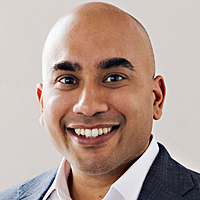
Kevin Fernandes
Dejero has had 5G-capable products since 2019 and the company found the development work to blend 5G with 4G links to be relatively easy, said Dejero Chief Revenue Officer Kevin Fernandes, who sees 5G adoption picking up in North America post-pandemic. He said the ability to deal with the different latencies of middle-earth-orbit (MEO), LEO and geosynchronous (GEO) satellite and blend them with a 5G connection represents a much bigger technological advancement than going from 4G to 5G. He doesn’t think 5G will be a game-changer for traditional newsgathering, where he thinks 4G already does a good job, but does see 5G’s value for applications like remote sports production.
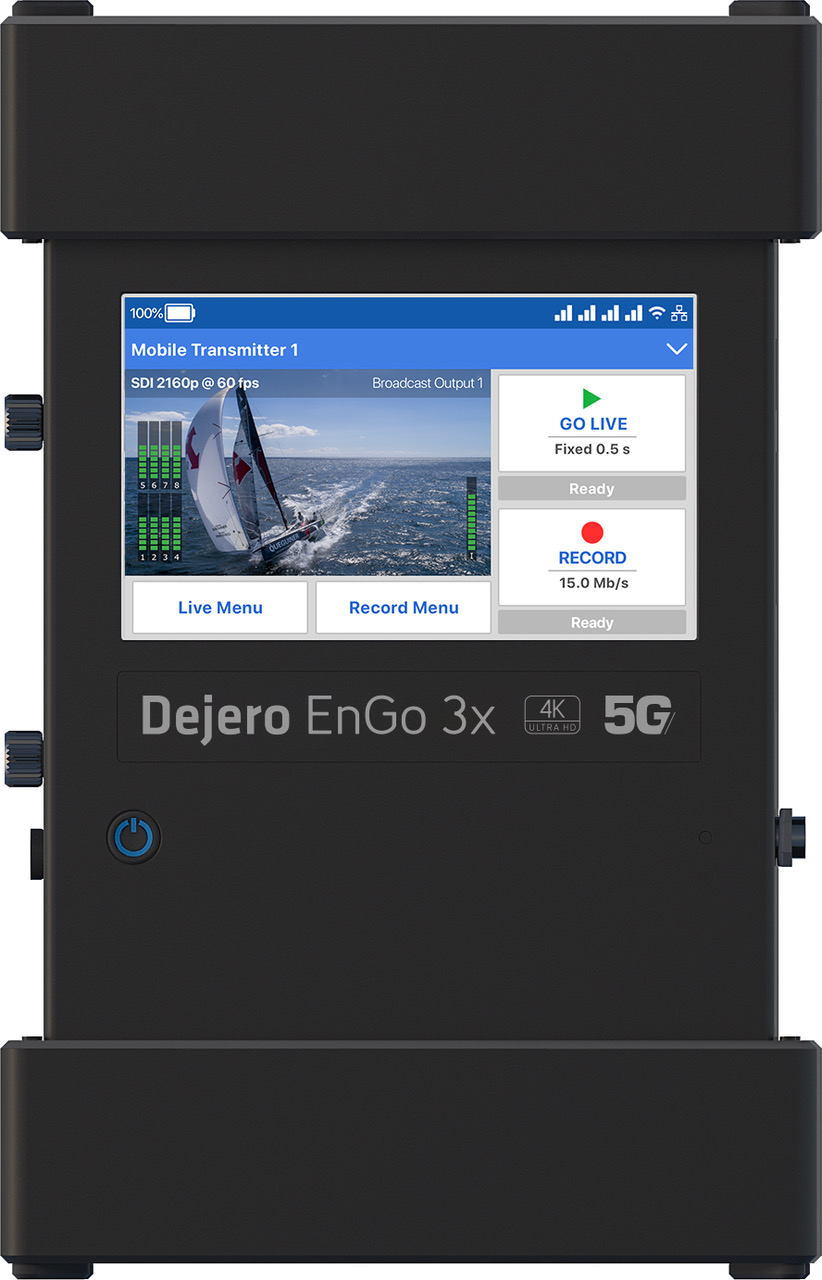
A Dejero EnGo 5G encoder
In that vein, at IBC Dejero will be showing its new EnGo 3x 5G transmitter with multi-camera support for up to four fully frame-synced HD feeds, 4K UHD transmission capability, and the option to combine with other wireless networks including Wi-Fi and GEO/MEO/LEO satellite as well as fixed line broadband.
“If you zoom out a little bit, having multiple forms of connectivity, including terrestrial and satellite, multi-earth-orbit type stuff, is the name of the game,” Fernandes says. “Everything has its strength and weaknesses. For me, I put 5G and its capabilities in the same bucket as LEOs. From the Dejero perspective, I want LEOs, 5G, fixed broadband and if you have a microwave link I’ll take that too. When we talk about robust, reliable connectivity, not one medium is going to be more reliable than a virtual network of networks.”
While LTE is perfectly adequate for most applications, broadcasters are always looking for more bandwidth, says Matt McEwen, VP of product management for bonded cellular provider TVU Networks.

Matt McEwen
“It used to just be from the location back to the studio, but now they want to use return video feeds, they want to do REMI production for big sporting events, they want to send six cameras back across the same link,” McEwen says. “So the increased bandwidth that 5G enables is always a good thing. All of our customers are bandwidth-hungry.”
TVU has been shipping 5G-capable products for over 18 months including its flagship TVU One backpack unit, TVU Router data aggregation product and RPS Link encoder aimed at REMI production, which can handle multiple camera feeds and carry up to six 5G modems.
Some of TVU’s first 5G work came at the 2020 Super Bowl in Miami, where Verizon had just deployed its millimeter-wave “high band” 5G service in Hard Rock Stadium. TVU was able to use a 5G MiFi device tethered to its TVU One pack to aggregate the mmWave service.
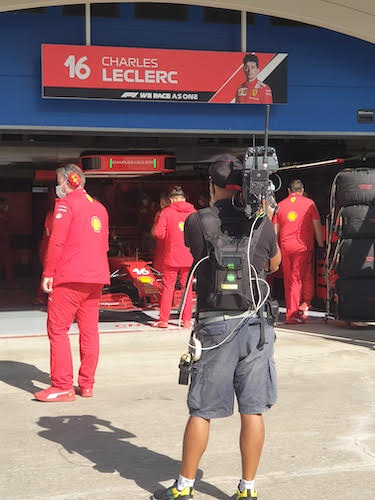
TVU recently sold more than 30 5G transmitters to Turkish news agency IHA.
Since then TVU has done other experiments with mmWave, including a transmission of compressed 8K video over 5G spectrum from China Telecom back in 2021. But the bulk of the company’s 5G work in Asia, Europe and North America has been in the sub-6 GHz range. That is a function of demand, as customers haven’t been asking for mmWave modems given its limited range and smaller coverage footprint compared to the other 5G bands.
“mmWave because of its limitations tends to be a little more isolated in its use, like coverage just in a stadium,” McEwen says. “Obviously it has lower latency and higher speeds. Our current modems that we use in our devices are all currently sub-6 [GHz], but that’s all based on demand from the market. You can get a Samsung [Galaxy] S22 phone that runs fine on mmWave and plug that directly into the pack via USB and it will aggregate that link, and it’s completely optimized on the phone. We have solutions to allow people to use mmWave, we just haven’t had the demand thus far.”
Mid-Band Moves
Competitor LiveU also isn’t working with mmWave modems today. The company launched its first product designed from the ground up for 5G, the LU800 backpack unit, back in 2020. It has since followed up with a second 5G-capable unit, the LU300S belt- or camera-mounted unit, which was introduced at NAB 2022.
“We found the sales adoption of 5G units to be pretty fast,” says LiveU CTO Daniel Pisarski. “Customers were very interested, they wanted to give it a try.”

Daniel Pisarski
The interest in 5G was high enough that LiveU has standardized on the modem count for the six-modem LU800, which was originally offered with an option to get all LTE modems or 2 5G modems or 4 5G modems. Now the standard mix is four 5G modems and two LTE modems.
Those 5G modems can still fail over to LTE if there isn’t adequate 5G coverage, and Pisarski didn’t have any firm numbers on how much customer traffic is being carried over 5G today. But he said in terms of the data split, that rate of adoption is “a little lower” than how 5G unit sales are pacing.
“It’s certainly not overtaking LTE data in any way in terms of that adoption,” Pisarski says.
It’s only recently as more mid-band spectrum that really improves performance has come online that the 5G needle has started to move for broadcasters, Pisarski says. The midband links LiveU uses today generally provide speeds of 170 to 350 Mbps, which is partly a reflection of how uncrowded the networks are. Pisarski said in the early days of LTE LiveU used to get 75 to 80 Mbps on a link but now is lucky to see 6 to 7 Mbps as the networks have become congested.
Fox is one major broadcaster already making heavy use of 5G. Fox uses fiber as the primary backhaul for its live sports feeds, and in many cases now employs bonded cellular systems instead of satellite for its backup transmissions. Those backup feeds are often traveling via 5G frequencies today, as Fox has upgraded its whole field fleet of LiveU bonded cellular units to 5G capable models including LU300S and LU800 units.
LiveU 5G-capable bonded devices are also being used by announcers working remotely and calling games from home. And Fox has been doing some private 5G bonded trials with other vendors, such as Peplink and its MBX router.
“We’re actually doing a good amount [of 5G],” says Brad Cheney, VP of field operations and engineering for Fox Sports.

Brad Cheney
Cheney has personally seen 5G coverage improve over the last few months as some of the new 5G spectrum that resulted from the C-band frequency auction has started to come online.
“The 5g coverage has gotten a lot better,” Cheney says.
One of the key advantages of 5G for Fox is the increased data throughput it affords, particularly since Fox is producing its major league sports coverage today in 1080p HDR. Fox’s normal backup feed over LiveU is 20 megabits per second (Mbps), which Cheney acknowledged is much higher than news crews might use but which he said is necessary for 1080p HDR.
“In many cases, we’re shipping back multiple camera feeds, and we might have units doing 80 Mbps [in total] across two cell providers,” said Cheney. “There’s a lot out there available for all of us to do and use.”
Cheney said the lower latency of 5G compared to LTE is also attractive as Fox does more REMI-style productions. He added that private 5G networks have great potential in the future as a way to help support REMI productions with their two-way IP capability enabling remote camera control and return data feeds.
Perhaps Fox’s most high-profile use of 5G has been during coverage of the “Field of Dreams” Major League Baseball games, held the past two years at the ballpark in a cornfield in Dyersville, Iowa, featured in the 1989 Universal Pictures movie. To get dynamic aerial shots from two drones, Fox backhauled the camera feeds via a private 5G network set up by T-Mobile and using LiveU’s LU800 equipped with a 5G modem. Cheney said the 5G workflow from the drone to the production truck was similar to using traditional microwave.
Going Private
Such private 5G deployments, using different frequencies than those employed for consumer 5G service, are a new focus for broadcasters seeking better upload performance and reliability, Pisarski says. Previously they were more interested in the concept of network slicing, where a carrier could carve out a dedicated slice of bandwidth for an enterprise customer and deliver a guaranteed bitrate, such as 60 Mbps, for a premium.
LiveU has experimented with network slicing, including a formal test in Europe last spring with Ericsson and Italian broadcaster RAI, but Pisarski says that real-world implementation is probably some ways off. He doesn’t know of any carrier with a publicly available network slicing product.
“We tried to be involved in as many early tests as we could,” Pisarski says. “Over the last three years, we’ve seen a shift a little bit away from slicing and toward private deployments, and I think the reason for that is just availability.”
One transmission vendor that has been busy in the private 5G space is Vislink, which has long provided wireless camera links based on OFDM digital microwave technology to major sports broadcasters. The company first tested a private 5G system in the summer of 2021 for a MotoGP motorcycle race in the U.K., pulling live video feeds via 5G from motorcycles moving at speed as well as equipping shoulder-mounted cameras with 5G transmitters to cover the action in pit lane.
This past May, Vislink teamed with BT Sport to produce coverage of a professional rugby match in London with private 5G-enabled wireless cameras capturing the action from the sidelines. And just last month Vislink teamed with the BBC and BT Media and Broadcast to set up a private 5G private network for the Commonwealth Games in Birmingham, England that helped support a large-scale remote production scheme for the multinational event.
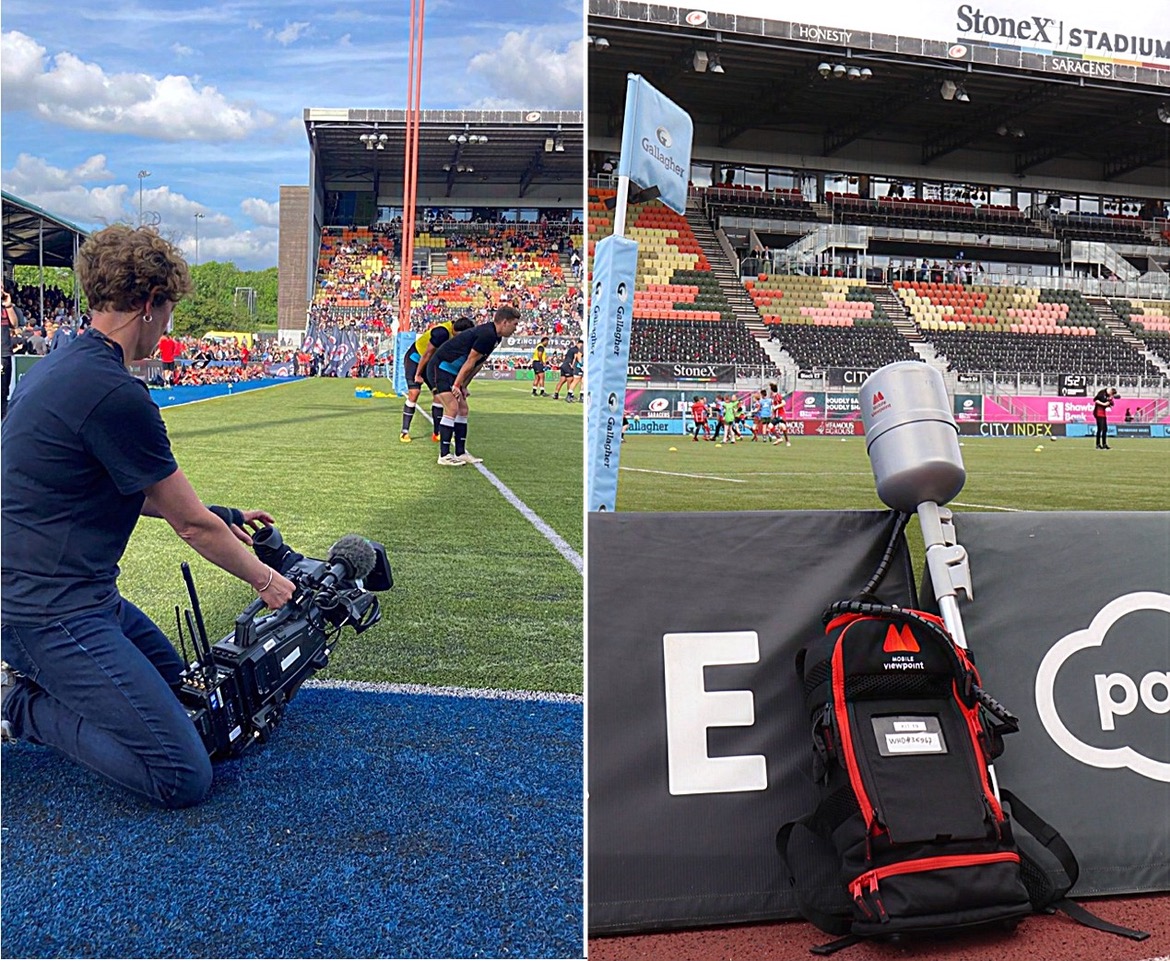
A Vislink Mobile Viewpoint 5G rugby demonstration.
At IBC, the company is introducing a new end-to-end remote production system developed from its private 5G efforts, “Vislink 5G 4Live,” which includes a 5G transmitter and compact 5G radios and is designed to be compatible with customers’ existing Vislink OFDM systems.

David Edwards
“It’s a 5G system in a box that our customers can deploy at a stadium or a big public event, and they have control of that network infrastructure themselves,” says David Edwards, Vislink 5G and live production product manager. “What you end up with is a little flycase with one or two RUs of servers, which has your 5G cell processing in it, and a couple radio heads, which are about as big as my head, which you can deploy somewhere near a football pitch [soccer field] or wherever you need to be.”
Like digital microwave systems, a private 5G network requires a broadcaster to secure frequencies from local spectrum authorities for the duration of an event. While 5G spectrum is evolving globally, Vislink has generally been targeting midband frequencies.
“Similarly across the globe, there seems to be publicly available frequencies in similar ranges with 100 to 200 MHz of bandwidth available, which would give you a significant amount of bandwidth to do multiple radios on,” Edwards says. “In the U.S., the CBRS [the 3.5 GHz band known as the Citizens Broadband Radio Service] is an interesting band to look at.”
According to Edwards, a private 5G network provides many of the same advantages and similar performance for live wireless camera links as digital microwave, including not having to worry about contention from other devices on the same frequency; low latency; and robust throughput for high picture quality. Vislink has been transmitting 1080p camera feeds over 5G at 10 to 20 Mbps for HD and 20 to 40 Mbps for 4K.
One advantage over digital microwave for private 5G is that the technology is much more compact and IT-centric, which better matches the skills of many younger production personnel who are more familiar with Cat 5 cables than coax.
Another benefit is that 5G is inherently an IP transport mechanism that provides true bidirectional connectivity. For a world that is moving to remote production, a private 5G cell deployed at an event can become a gateway to on-premise production equipment at a broadcast center and support switching between cameras, two-way voice communication with camera operators and even RS-232 remote camera control.
The BBC took advantage of this capability for the Commonwealth Games, using the private 5G cell in Birmingham as a gateway back to its London studios to do a REMI-style production. After the short hop from the Vislink 5G camera radios to the 5G cell, the BBC used an IP video link from BT to backhaul all the raw video feeds to London and did the production there.
Vislink acquired bonded cellular vendor Mobile Viewpoint last year, and for the Commonwealth Games production it incorporated Mobile Viewpoint bonded camera transmitters which it configured to attach to the private 5G network for news coverage. Edwards says those Mobile Viewpoint camera systems, which were used live by the BBC for its public interest show The One Show, could also be used to switch seamlessly back and forth between private and public 5G networks depending on need.
Future Improvements In Store
IP transmission vendor Haivision, which has found favor with broadcasters for low-latency contribution encoders that use the SRT (Secure Reliable Transport) protocol, is now a player in the 5G space after acquiring bonded cellular supplier Aviwest earlier this year.

Mark Horchler
Mark Horchler, Haivision’s marketing director of products and solutions, says that the 5G rollout is still in its early stages as the new 5G radio technology is still being used in combination with 4G core networks (a scheme known as “nonstandalone” 5G networks, compared to true 5G “standalone” networks). When those 4G cores shift to 5G, that’s when the full flexibility and agility of 5G will be available to broadcasters including faster uploads and applications like network slicing.
“Those are opportunities that broadcasters are really excited about for production,” Horchler says.
At IBC, Haivision is highlighting a range of 5G-capable mobile transmitters and encoders that can be used in combination with its Makito products for contribution over IP networks with SRT. The 5G products also have 10-bit encoding and 4:2:2 chroma subsampling to support high dynamic range (HDR) for either 1080p HDR or 4K HDR production.
Horchler says: “We’re talking to sports broadcasters that are really excited about us adding mobile products to our portfolio, because now they’ll be able to combine them for events. They’ll have some stationary cameras that require a fixed IP network, and then they’ll also have people running around with mobile cameras. Being able to bring all of those fixed and mobile streams into the same production workflow is something our customers have shown a lot of interest in from the contribution side.”
























Comments (0)